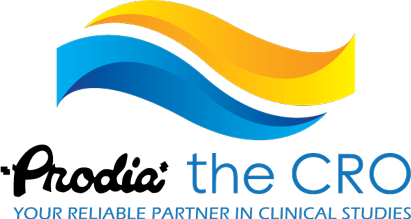
Regular business relies on vendors to provide the necessary products, parts, and raw materials to complete their end offering. As such, these companies can’t afford to lose their key vendors due to inefficient trade accounts payable processes resulting in late, lost, or faulty payments. If the accounts payable turnover ratio is high, it means that the company is fairly quick in paying suppliers. To find out how many days the company takes, on average, to pay its suppliers, we can calculate the average number of days payables are outstanding.

Benefits of a Vendor Management System: 10 Essential Outcomes for Procurement Teams
The accounting entry involves debiting an asset account, such as Inventory, or an expense account, like Supplies Expense, depending on the nature of the purchase. Simultaneously, the Accounts Payable liability account is credited, increasing the amount the business owes. Accounts payable is the money owed to creditors for purchases already incurred but not paid. Trade payable is a part of accounts payable only focusing on purchases directly related to business operations or inventory.
- A consulting firm integrates accounts payable processes into the ERP system.
- Effectively managing AP can strengthen vendor relationships, improve cash flow, and contribute to a company’s overall financial health.
- The goods that are not merchandise are the goods that the business does not normally deals in.
- Trade payables are liabilities directly relating to business operations, such as purchases of goods or services used to carry out the main objects of the business.
- This journal entry will eliminate the trade payable that we have recorded after making the credit purchase of the merchandise goods from our suppliers previously.
未払金(Other payables)

Typically, a business will have a separate accounts payable account for their trade payables. Trade payables are liabilities that are recorded as accounts payables, but not all accounts payables are trade payables. For example, when the company pays off trade payable, there should be a decrease in assets. If the derecognition due to the company liability does not exist, the derecognition will increase income in the income statement. For example, a company with $50,000 in accounts payable and $70,000 in accounts receivable has a net inflow of $20,000, indicating healthy working capital. For example, a company makes $100,000 in credit purchases for the year from their trade creditor.

Electricity Journal Entry
Therefore, the credit balance in Accounts Payable should be equal to the amount of vendor invoices that have been recorded but have not yet been paid. Accounts payable consist of purchases of goods and services on credit without a formal written contract. They fall under the current liabilities category because they should be settled within one year. Accounts payable, recorded as AP, represents the amounts a trade payables company owes to others that are to be paid in the short-term future. Current liabilities are short-term obligations that must be settled within a year.

- Clarify payment statuses proactively – Provide updates on upcoming disbursements to avoid confusion.
- The payment obligation that exists in form of the trade payable usually starts when we purchase the goods on credit or on the account.
- Purchasing raw materials from suppliers on credit for replenishing the inventory can be considered trade payable.
- Effective management of trade accounts payable involves a structured process to ensure timely and accurate payments to suppliers.
- Good management of trade payables allows a business to optimise cash flow by delaying payments until they fall due, and even extend the payment terms if possible.
- The amounts owed to these suppliers are recorded as accounts payable on the balance sheet under current liabilities.
As with most financial metrics, a How to Invoice as a Freelancer company’s turnover ratio is best examined relative to similar companies in its industry. For example, a company’s payables turnover ratio of two will be more concerning if virtually all of its competitors have a ratio of at least four. The double entry for noting accounts payable is that the Accounts Payable is credited (since it is a liability), the respective account will be debited.

What Are Other payables? (Explained)
It’s important for businesses to differentiate between these two payables because they have different implications when it comes to cash flow management and financial reporting. Understanding this distinction can help companies make better decisions regarding their procurement strategies and payment schedules. If payables are increasing, this can indicate the business is taking greater advantage of favorable vendor credit.
- Receivables are assets, while payables are liabilities in the accounting records.
- It is one of the critical entries to understand the financial well-being of a business.
- Mathematically, the chances of disclosing Other payables separately stands zero.
- All of these best practices are intended to improve the efficiency of the payables process.
- If a person is deemed to be an employee, the Internal Revenue Service requires that payroll taxes be withheld and a Form W-2 be issued instead of Form 1099-NEC.
Ensure that the bill includes vendor name, authorization, date, and verified and matching requirements to the purchase order. For the past 52 years, Harold Averkamp (CPA, MBA) hasworked as an accounting supervisor, manager, consultant, university instructor, and innovator in teaching accounting online. Accounts Payable is also debited when a company returns goods to a vendor or when the vendor grants an allowance. While the company views the individual as an independent contractor, the Internal Revenue Service rules may dictate that the individual is actually a part-time employee. If a person is deemed to be an employee, the Internal Revenue Service requires that payroll taxes be withheld and a Form W-2 https://edsurveys.dev.canvasdevelopment.com/a-guide-to-lease-accounting/ be issued instead of Form 1099-NEC. For the past 52 years, Harold Averkamp (CPA, MBA) has worked as an accounting supervisor, manager, consultant, university instructor, and innovator in teaching accounting online.









